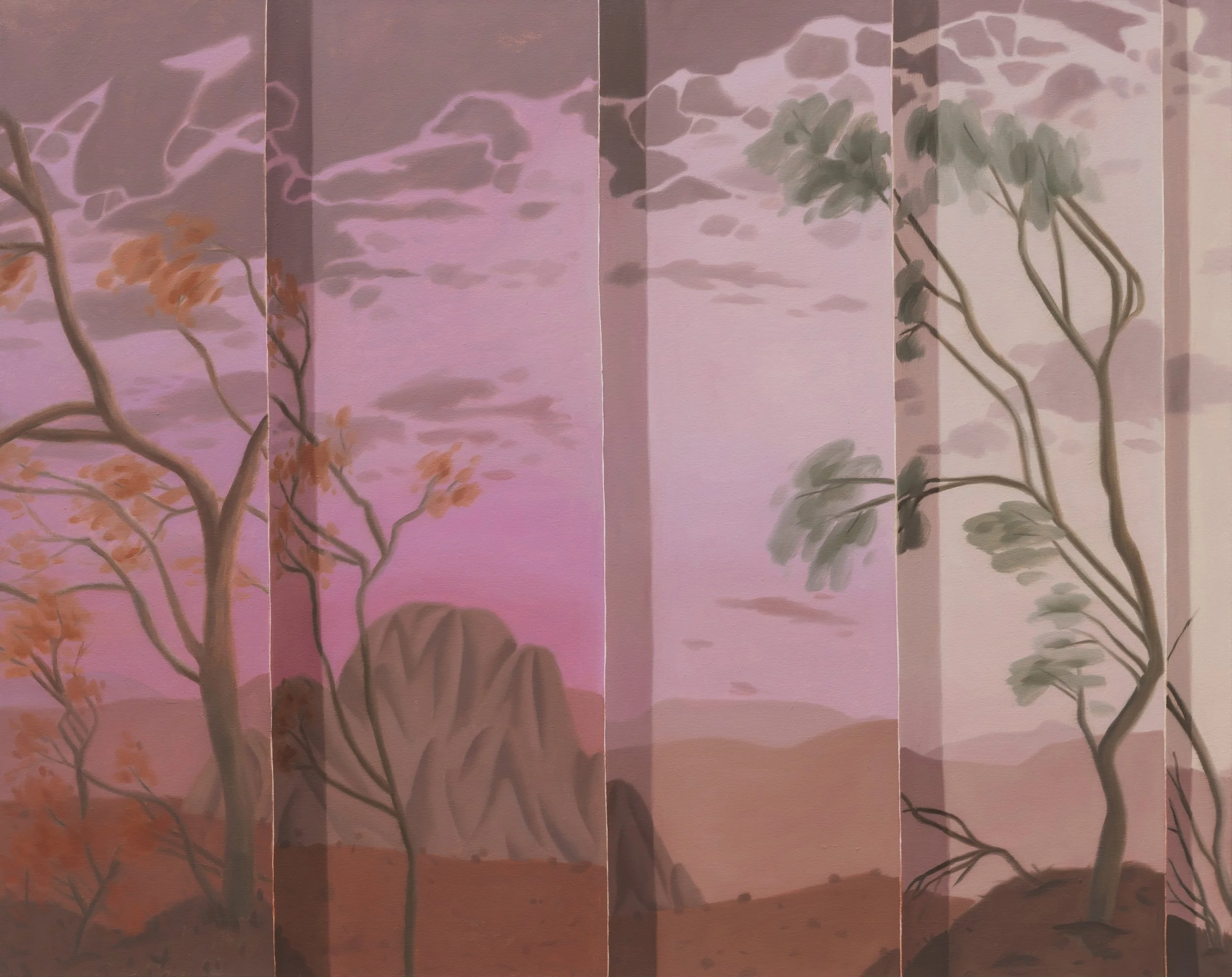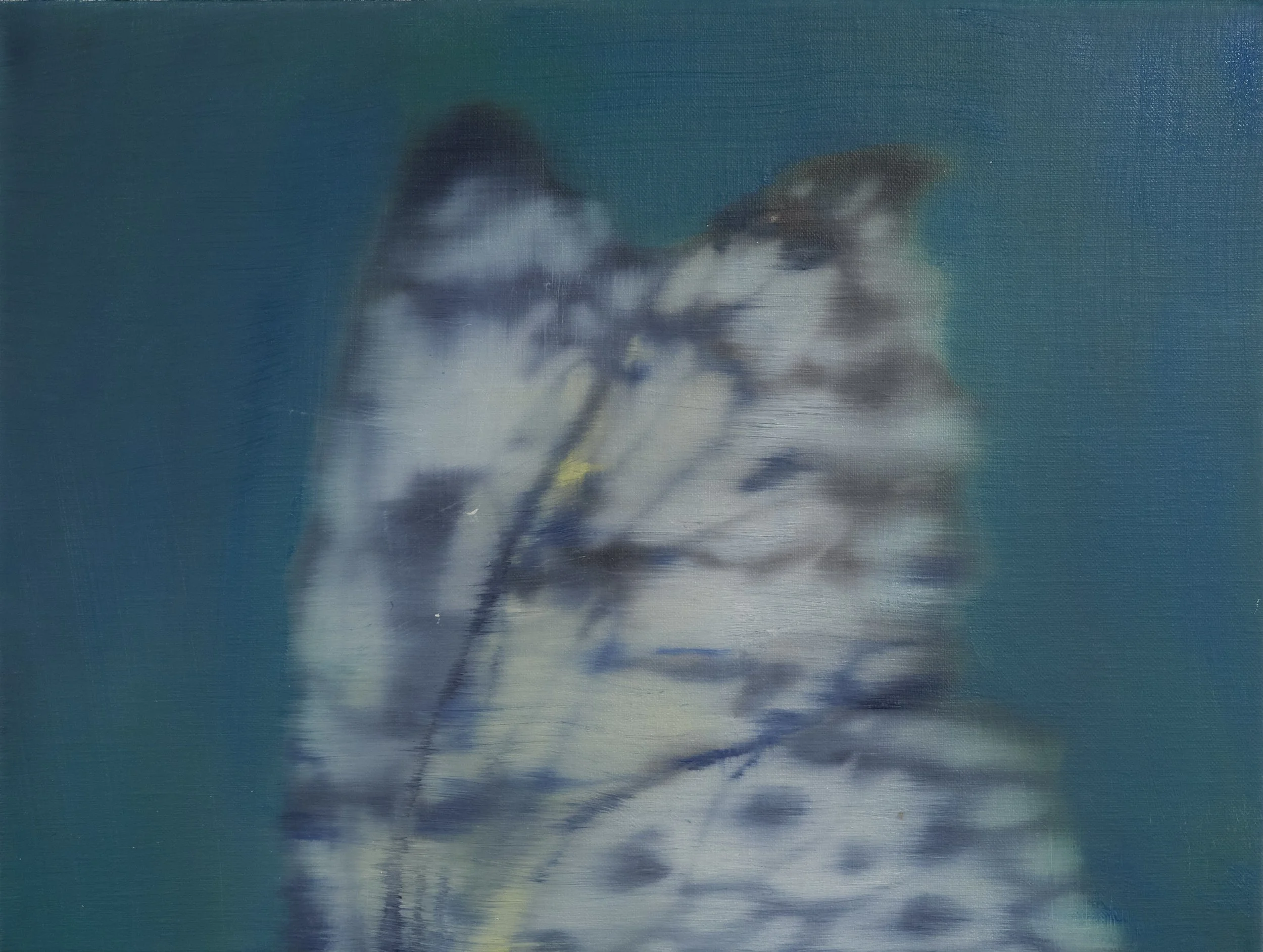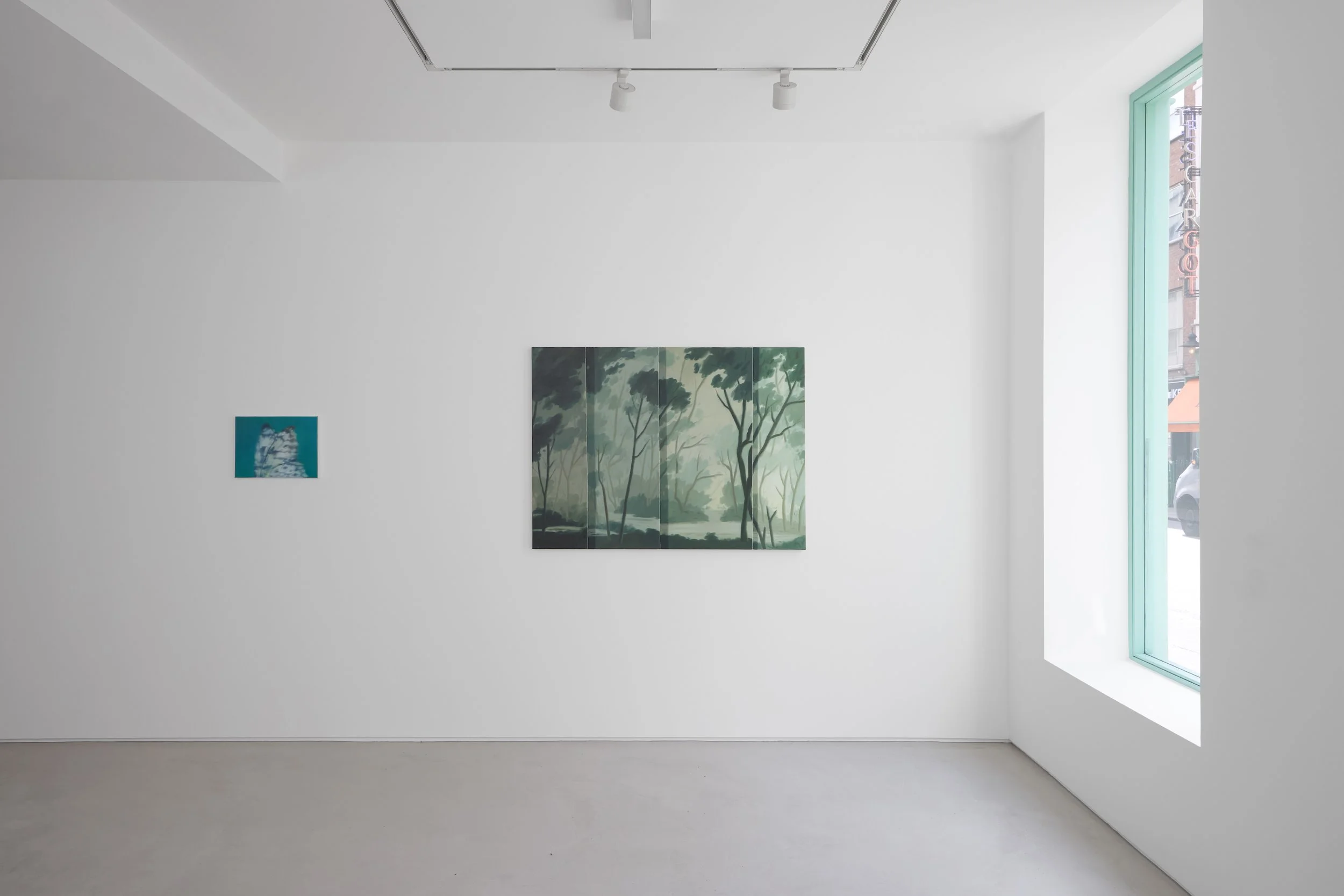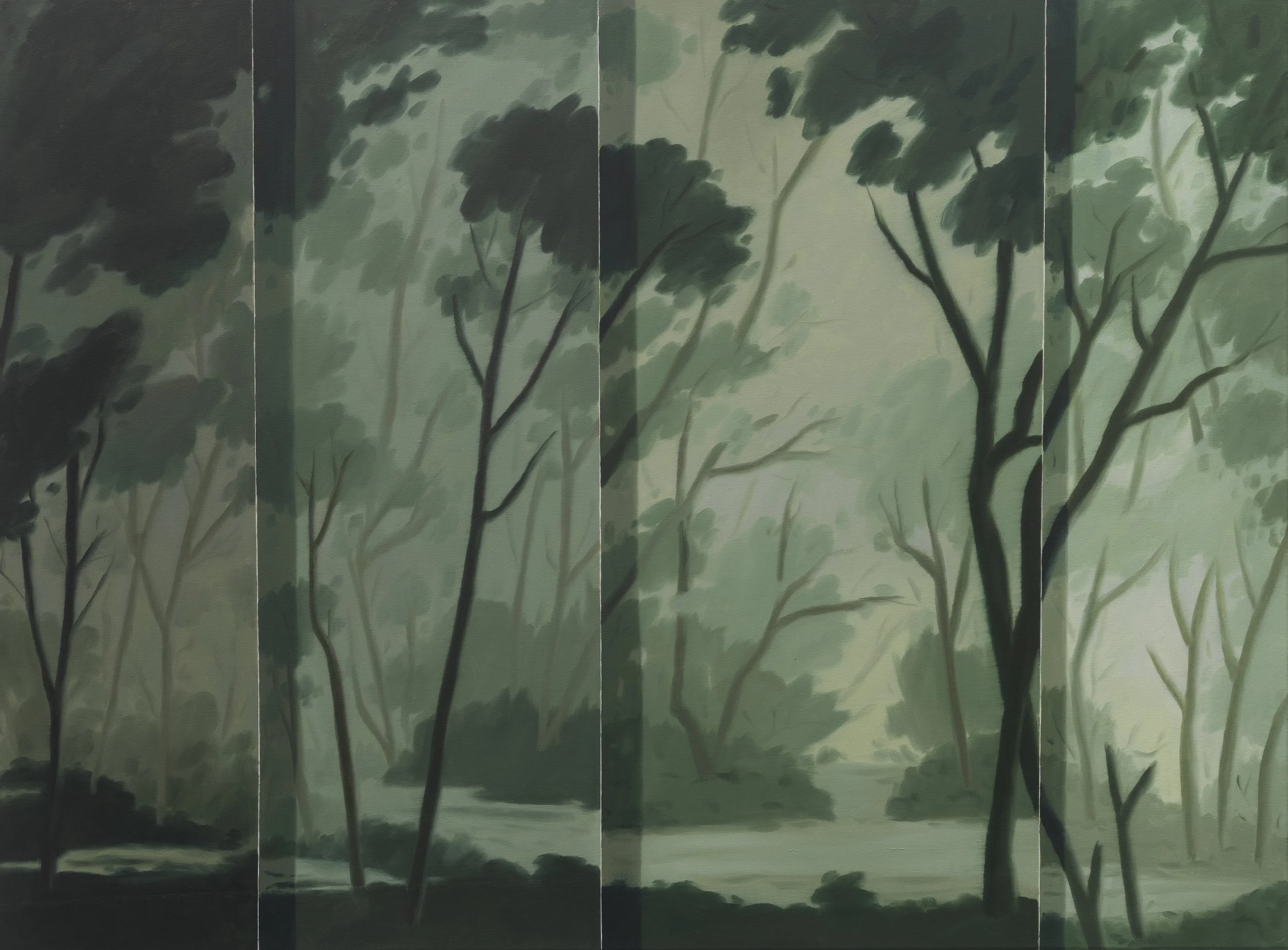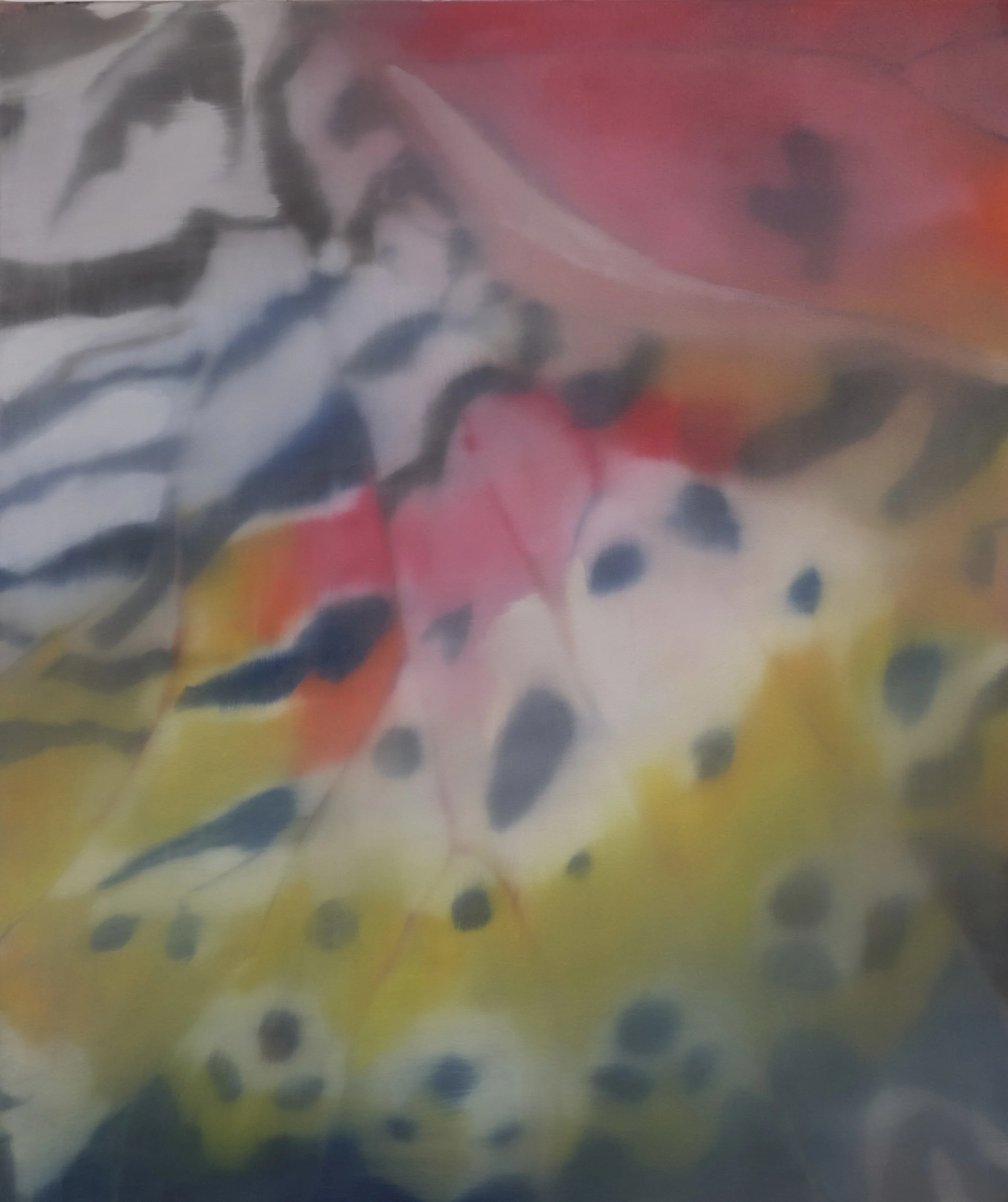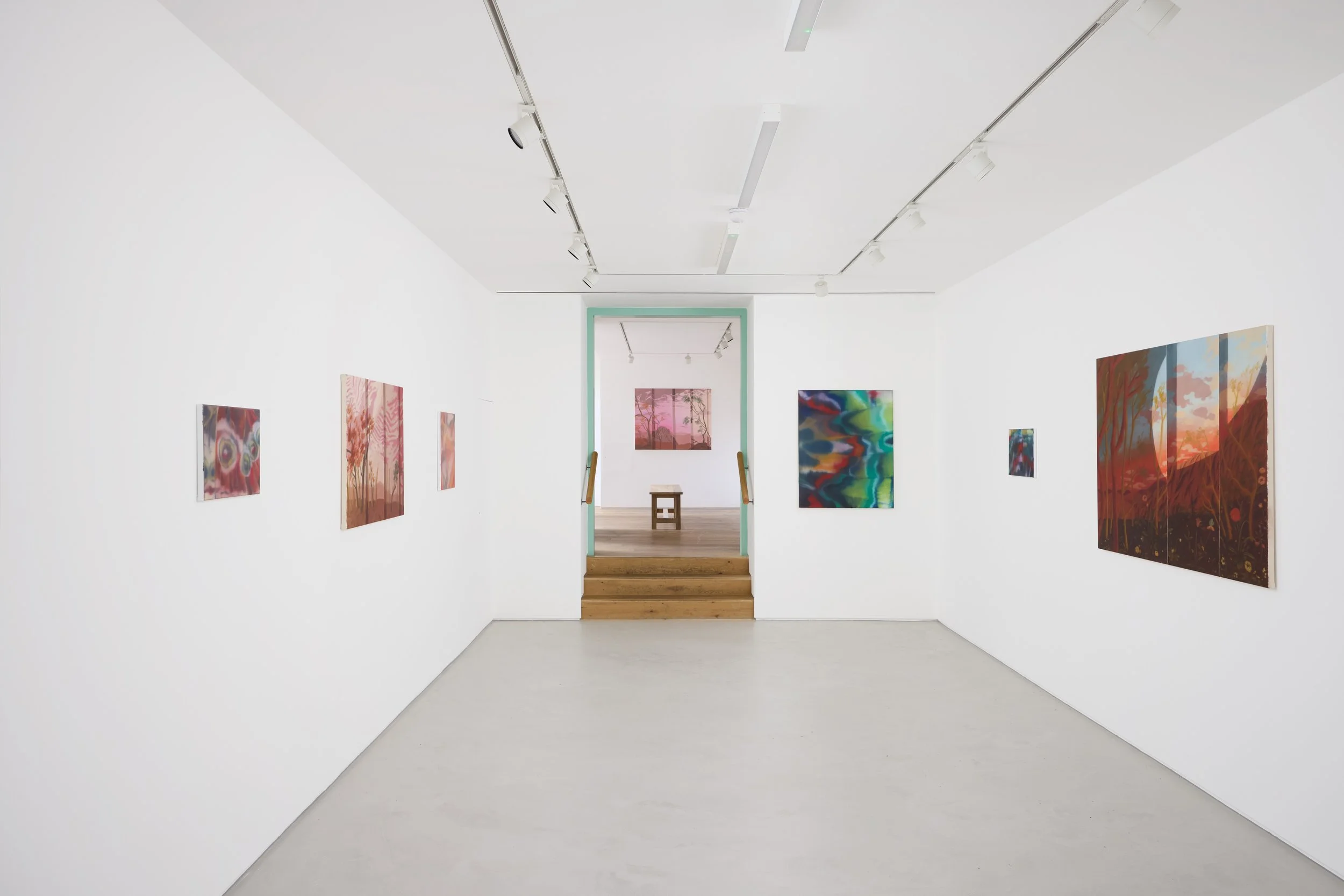IMAGO
Anne Carney Raines & Imogen Allen
17th September - 31st October
Imago is a mysterious word: its sound holds associations with the representational image, but it also contains whispers of the magical, of incantation. In entomology, the imago defines the final adult stage of a winged insect, which has a clear link to Imogen Allen’s semi-abstracted paintings of butterfly wings. But there is also a sense of development and emergence in the concept of the imago, of brief ephemeral moments and of representations that step half a pace ahead of reality.
Anne Carney Raines’ work is characterised by subtle shadows, misalignments, and a sense of the theatrical. While her paintings for this exhibition depict landscape scenes, they simultaneously read as murals or decorative panels within an interior space. There is a metatheatre to her work that is appropriate to her ongoing interest in stage sets, insistently reminding the viewer that these are paintings, rather than the real thing. They are representations of representations, sometimes dramatically spotlit as though on a stage, where space unfolds concertina-like into an uncertain distance.
As with all trompe l’oeil images, this inevitably comes with a sense of uncanniness, an unnerving uncertainty about how the picture plane continues from the viewer’s spatial reality. The sense of these works as mediated views of landscapes adds a subtle dystopian undertone to the images. The saturated sunset colours begin to appear almost toxic, as though foretelling an environmental disaster. Are these merely memories of a landscape that no longer exists, captured for posterity? Or perhaps portals to a challenging future?
This ecological sensibility is shared by Imogen Allen, whose series of paintings for Imago is part of the artist’s ongoing interest in creating macro abstractions of natural subjects. Here, close-up images of butterfly wings offer an avenue to expressing a sense of awe, wonder, and intimacy with the more-than-human world. While the butterfly is steeped in symbolism, Allen seeks to look beyond the cultural baggage and instead look to the insects both as beings in themselves and as aesthetic studies of colour, pattern, and beauty.
Under Allen’s treatment, the butterfly becomes a tool for exploring the relationships between colour and form. Across her oeuvre, paint sinks into the weave of the canvas, creating a hazy, mysterious surface, a dynamic lightness. There is a sense of fluidity and looseness within stillness, in which each work emerges as an energetic entity with its own vitality. Her semi-abstracted images could be interpreted as aerial perspectives: landscapes seen as though from the butterfly’s-eye-view. Vast geographies are encapsulated within a tiny wingspan, implying an intrinsic shift of perspective from the microcosmic to the macrocosmic that is almost dizzying.
While Allen offers a sensory experience of landscape, Raines draws more explicitly from pastoral landscape traditions and art historical references such as Nicolas Poussin and Claude Lorrain. In Raines’ work, trees and sky become architectural elements, developing from her ongoing interest in interior, domestic, and theatrical spaces. These landscapes are not drawn from a specific geography, but combine remembered images from the artist’s life and travels.
Both artists share an interest in finding ways to paint the things that contemporary art gatekeepers have deemed too cliché – or even too pretty – for representation. Sunsets and butterflies are pinnacles of colourful kitsch, but Raines and Allen have both found ways to make these too-popular subjects central to their practices in unexpected and radical ways. There is a playful defiance at work here, a knowing wink at the art world’s usual markers of taste and class.
Text by Anna Souter
